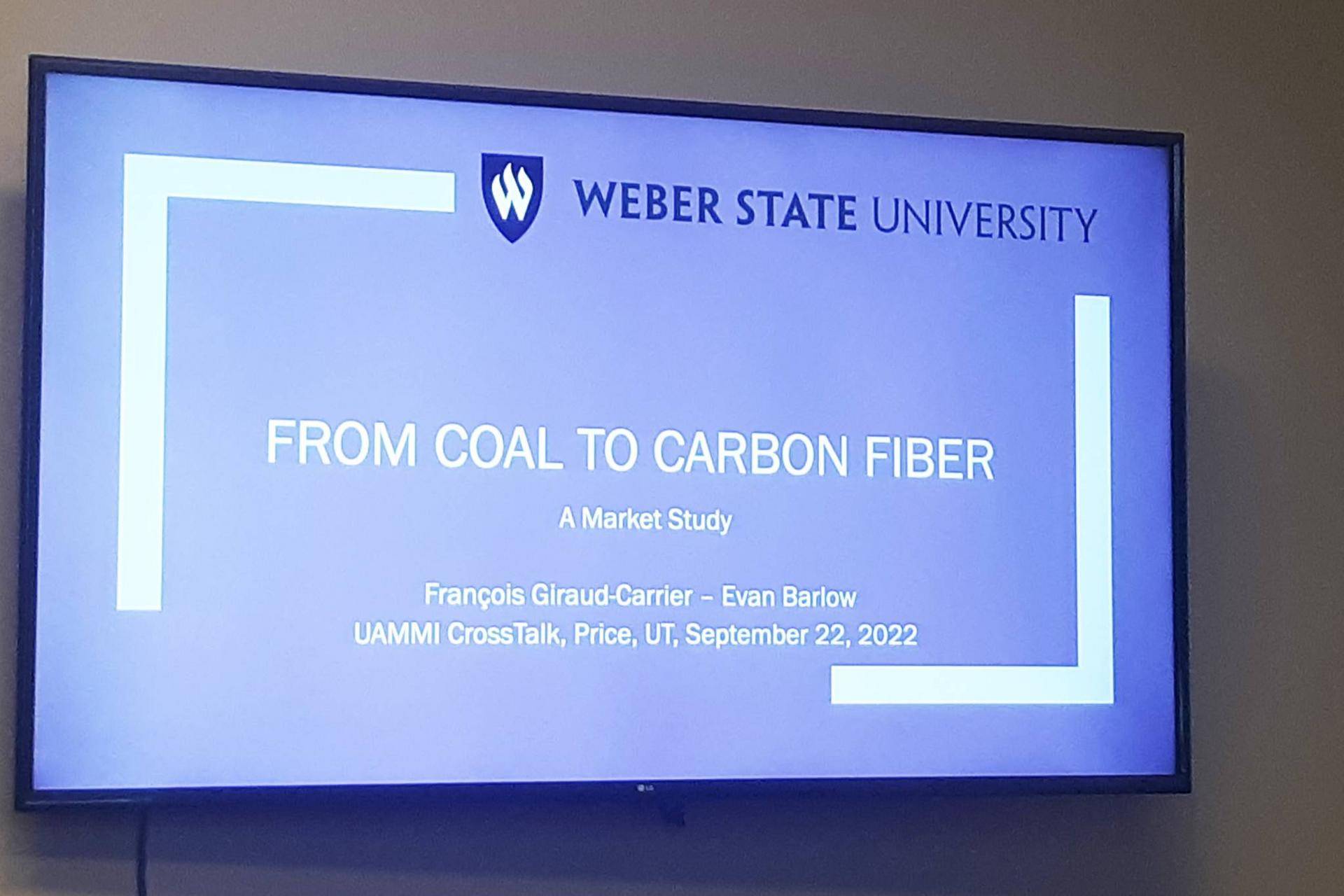The monthly session for the Utah Advanced Materials and Manufacturing Initiative (UAMMI) on Thursday revolved around carbon fiber. This was hosted at the Business and Technical Assistance Center in Price beginning at 11:30 a.m.
The topic of conversation was Coal to Carbon Fiber; Facts and Fictions. This was led by Guy Letendre, UAMMI Deputy Director. Letendre explained the process of creating carbon fiber, spanning from coal to pitch. This process goes from 78% carbon to 94% carbon. Once the pitch is made, the carbon fiber can be created.
The pitch acts as a sort of resin of the carbon fiber, which is 99.9% carbon. It is essentially very small fibers that are woven into a cloth, though there are also different applications for the carbon fiber.
The fiber can be used to make a number of different things and there is a desire to create it here in Utah. The largest market of carbon fiber is made from a process that starts with oil and there are companies that make the carbon fiber from pitch, which is another method from oil.
The bulk of the market for carbon fiber, Letendre explained, is for applications such as wind energy, aerospace, sporting goods and pressure vessels. The two largest applications are the wind energy and aerospace. Carbon fiber can also be used in satellites, drive shafts and a surprising amount of other products.
There is a real need to reduce the cost of carbon fiber and manufacturing in order to make it more accessible and viable to distribute. The three main cost drivers are energy, the cost of the plant itself and the cost of the pitch that goes into the factory.
For normal carbon fiber, the pitch is very expensive. However, if cost goals can be achieved, the pitch price can be around $2.50 or even lower. Letendre stated that, overwhelmingly, the answer is yes in regard to the possible demand, but the pricing has to be in the right range.
There is a plant that is being discussed to make the pitch that will input 450,000 tons of coal and will produce 13,000 tons of pitch. That can create 3,850 tons of carbon fiber. The proposed Ekocoke plant produces large quantities of coal pitch economically.
Letendre then showed a list of over 30 parts in a vehicle that could be made from carbon fiber. The parts can work for a Ford F-Series, Chevrolet Silverado, Tesla 3, Honda Civic, Toyota Tacoma and other makes.
The big takeaway from the presentation is that there is a need to reduce the carbon fiber manufacturing cost further and find applications in the automotive industry. Though the plant is still in the development stage, there is hope for advancement in the future.
The next monthly session for UAMMI is scheduled for Thursday, Jan. 12 and will feature Dr. Tulinda Larsen, who will focus on UAMMI’s Programs for Manufacturing Companies. This will begin at 11:30 a.m. and lunch will be served.

